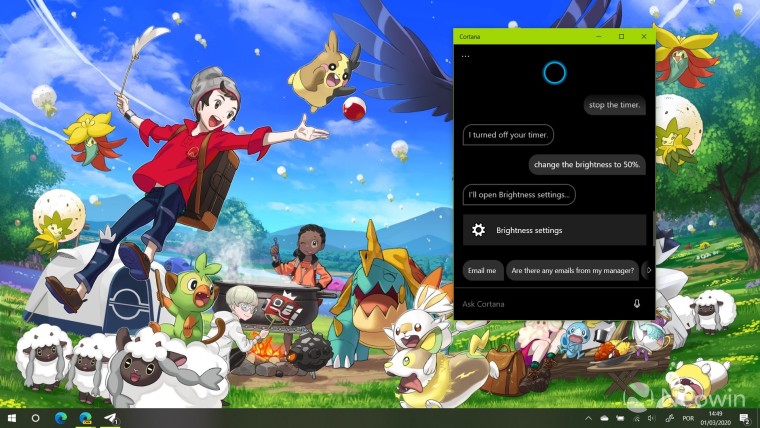Technology
Reflecting on a Decade of Windows 10: Top 10 Stories Revealed

As Windows 10 approaches its 10th anniversary, a retrospective look at the operating system highlights the most impactful stories from the past decade. In this exploration, we delve into the top ten stories that captivated our audience, ordered by viewership from least to most popular. Each entry focuses primarily on Windows 10, yet may touch upon related topics.
Major Updates and Shifts in Focus
One notable aspect of Windows 10’s evolution is the change in update strategy. Historically, Microsoft released two feature updates annually: the H1 update, a significant upgrade filled with new features, and the H2 update, which primarily served as an enablement package for previously disabled capabilities. The Windows 10 May 2021 Update, also known as version 21H1, marked a shift, as it too functioned as an enablement package. This update was characterized by only three enhancements, including improvements to Windows Hello and Windows Defender Application Guard. While the update was modest, it generated considerable interest among users, as it demonstrated the evolving nature of Microsoft’s update philosophy.
Performance comparisons between Windows 10 and its successor, Windows 11, also drew significant attention. In our own testing, we found that both operating systems perform similarly across various benchmarks. Although Windows 11 includes new features, the performance differences are negligible, reassuring users that gaming performance remains stable regardless of their choice to upgrade.
Controversies and Community Concerns
Another compelling story that resonated with readers involved an app released by Microsoft in the Microsoft Store aimed at optimizing performance for both Windows 10 and Windows 11. Our investigation revealed troubling aspects, such as aggressive deletion practices and affiliate links that raised concerns about the app’s integrity. This incident underscored a broader skepticism within the community regarding optimization tools.
As we near the end of official support for Windows 10, discussions surrounding the environmental impact of obsolete devices have gained traction. In an editorial by our News Editor, Paul Hill, he highlighted the potential for old PCs to contribute to landfill waste as support ceases. While he offered various options to extend support, including Extended Security Updates and alternative operating systems like Linux, his insights spurred a significant conversation among readers.
The changing landscape of Windows operating systems is also reflected in market share statistics. As of May 2024, Windows 10 held approximately 70% of the market, while Windows 11 lagged behind at 25%. However, as Windows 10’s end of life approaches, the market share has nearly equalized, with both systems now occupying roughly 48% each. This shift indicates a pivotal moment for users contemplating upgrades.
User issues, such as error code 0x80070643 related to the Windows Recovery Environment, have persisted as significant pain points. Microsoft has communicated that this issue cannot be resolved through automated means, leaving users to navigate these challenges independently. Despite the frustration this has caused, Microsoft has reassured users that the issue does not affect critical system functions.
Further complicating the upgrade path, a driver issue involving the Intel Smart Sound Technology Audio Controller had blocked many users from upgrading to Windows 11 for over two years. Fortunately, a resolution was reached in April 2024, allowing users to finally proceed with the upgrade. This collaboration between Microsoft and Intel underscored the complexities of hardware and software compatibility.
Feature Roundups and Community Engagement
Our audience has consistently shown a strong interest in feature roundups, with articles detailing updates like Windows 10 version 20H2 receiving widespread attention. This roundup highlighted new capabilities such as Start menu improvements and the introduction of a Chromium-based Edge browser. At the time, it was perceived as a minor update, especially in light of the subsequent version 21H1, which was even more limited.
Conversely, the most-read article in our Windows 10 coverage focused on the extensive features introduced in version 2004. This H1 release provided users with a wealth of new functionalities, including a revamped Cortana app and enhancements to Windows Search, making it a landmark update. The overwhelming reader engagement with this article illustrates the community’s ongoing interest in Windows 10’s evolving features.
As we reflect on the past decade of Windows 10, it is clear that the operating system has profoundly impacted users and the broader technology landscape. With its 10th anniversary approaching, the stories we have shared not only celebrate its history but also highlight the challenges and triumphs that have shaped the experience of millions of users worldwide.
-

 Technology5 months ago
Technology5 months agoDiscover the Top 10 Calorie Counting Apps of 2025
-

 Health3 months ago
Health3 months agoBella Hadid Shares Health Update After Treatment for Lyme Disease
-

 Health3 months ago
Health3 months agoErin Bates Shares Recovery Update Following Sepsis Complications
-

 Technology4 months ago
Technology4 months agoDiscover How to Reverse Image Search Using ChatGPT Effortlessly
-

 Technology1 month ago
Technology1 month agoDiscover 2025’s Top GPUs for Exceptional 4K Gaming Performance
-

 Technology3 months ago
Technology3 months agoElectric Moto Influencer Surronster Arrested in Tijuana
-

 Technology5 months ago
Technology5 months agoMeta Initiates $60B AI Data Center Expansion, Starting in Ohio
-

 Technology5 months ago
Technology5 months agoRecovering a Suspended TikTok Account: A Step-by-Step Guide
-

 Health4 months ago
Health4 months agoTested: Rab Firewall Mountain Jacket Survives Harsh Conditions
-

 Lifestyle5 months ago
Lifestyle5 months agoBelton Family Reunites After Daughter Survives Hill Country Floods
-

 Health3 months ago
Health3 months agoAnalysts Project Stronger Growth for Apple’s iPhone 17 Lineup
-

 Technology4 months ago
Technology4 months agoHarmonic Launches AI Chatbot App to Transform Mathematical Reasoning



















